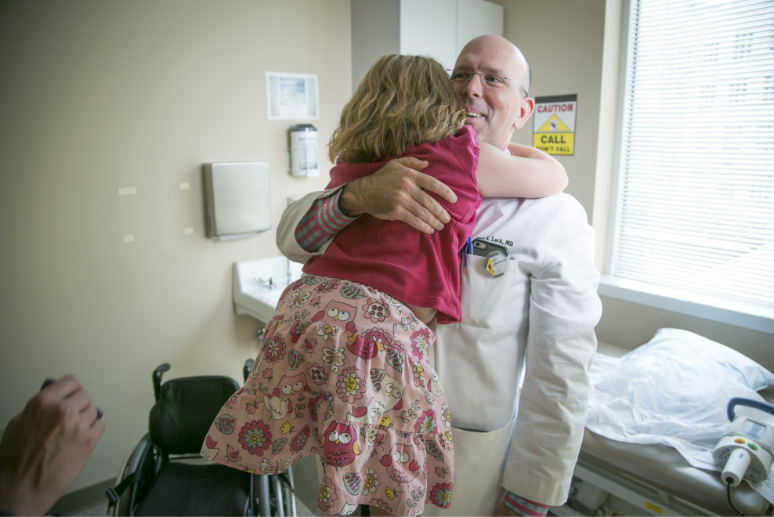ROOM TO GROW
A new spinal implant corrects scoliosis for a little girl, without multiple surgeries.
On a sunny August morning, Aubrey Parks—only eight years old at the time—and her mother, Laura Parks, had an appointment with Robert Lark, MD, a Duke Children’s orthopaedic surgeon. Aubrey was born at Duke with spina bifida, a condition in which the spinal column doesn’t close properly. A side effect of spina bifida is scoliosis, or curving of her spine. If it’s not treated, it can inhibit normal growth of the chest cavity and the lungs.
THE MAGEC (MAGNETIC EXPANSION CONTROL) ROD
She was at Duke Children’s for a complex medical procedure that previously would have required hours of surgery and weeks of recovery time. Traditional rods could have been implanted, but that would have meant that Aubrey would face a major surgery every six months, for three years, to manually lengthen the rods to accommodate her growth.
Instead, thanks to the new device—the MAGEC Rod—that Lark implanted in Aubrey’s back, the rod can be lengthened to accommodate her growth by remote control, without surgery.

“READY TO GROW?”
During treatment, Aubrey needs to see Lark every three months for a quick appointment. “She goes in for 15 minutes, grows, then sneaks back to school,” says Laura Parks. “The first time we took her in for a lengthening, I don’t’ think any of us knew what to expect. It took about 30 seconds. We looked at each other, like, ‘Is that it?’”
This visit is Aubrey’s third lengthening. Lark uses a magnetic wand to detect and mark the exact location of the rods in Aubrey’s back. Then a technician turns on a handheld device that will lengthen the rods in Aubrey’s spine by rotating magnets inside. Lark places the device on Aubrey’s back. “Ready to grow?” he asks. She nods.
- Traditional Rods
- Manually adjusted
- Major surgery every three months
- Inserted for three years
- MAGEC
- Adjusted by remote control
- Quick appointment every three months
- Spine is lengthened painlessly in seconds
One of the final hurdles for the Parks family will the surgery in which Lark will remove the device and fuse Aubrey’s spine permanently. “We will get through it and come out the other side, “Laura says. “And Aubrey still love Dr. Lark.”
“The MAGEC rod doesn’t work on all curves, and it’s not for every child,” Lark says, “but early research suggests it may be one of the best treatments we have for children for scoliosis.”